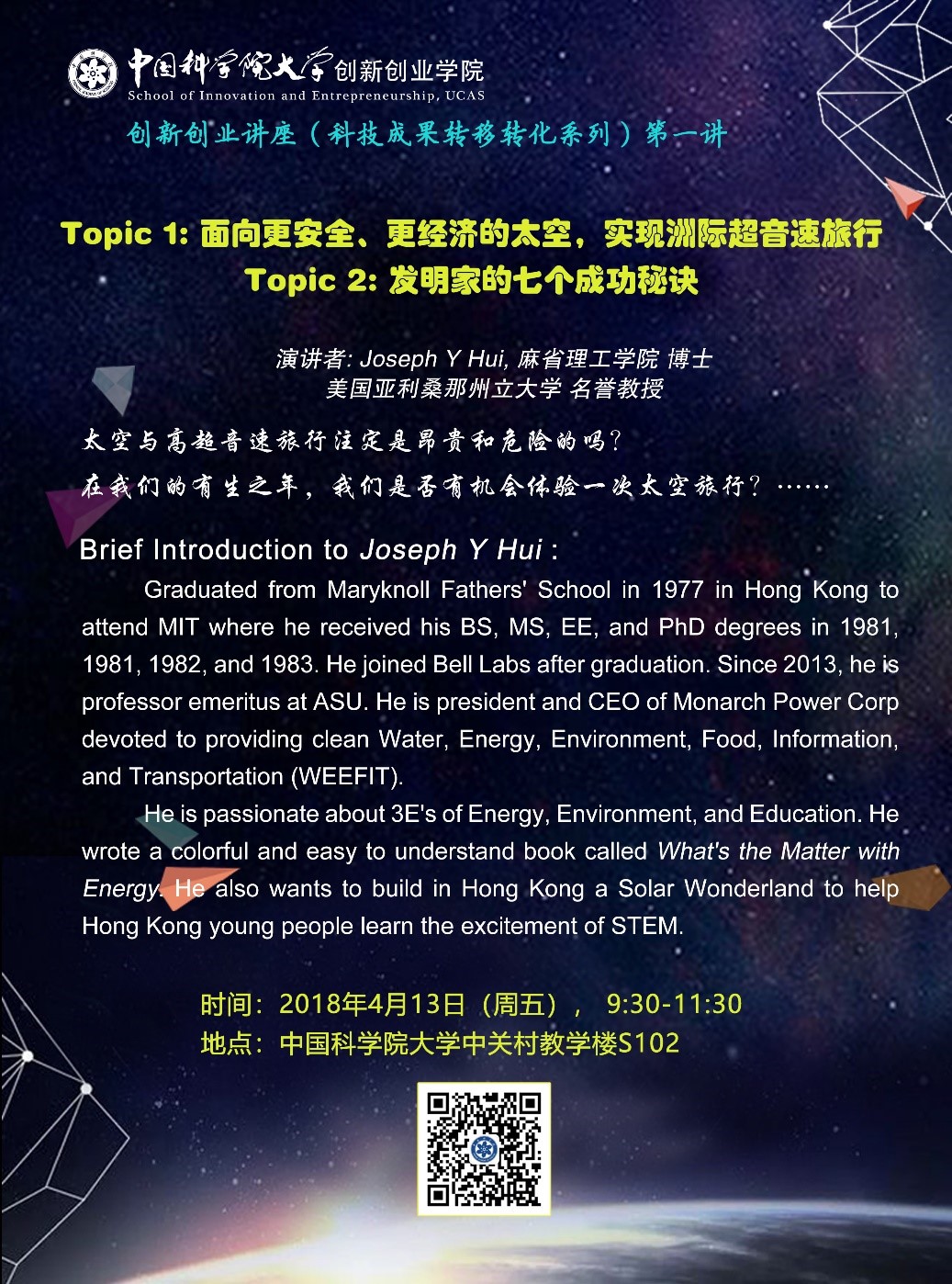通知公告
预告|创新创业讲座科技成果转移转化系列|許如藝:面向更安全、更经济的太空,实现洲际超音速旅行&发明家的七个成功秘诀

讲座题目1:Towards Safer and Affordable Space and Intercontinental Hypersonic Travel
讲座题目2:Seven Secrets of a Successful Inventor
主讲嘉宾:Joseph Y Hui(許如藝)麻省理工学院 博士 美国亚利桑那州立大学 名誉教授
讲座时间:2018年4月13日(周五)9:30-11:30
讲座地点:中国科学院大学中关村教学楼S102
嘉宾简介:Joseph Y Hui graduated from Maryknoll Fathers’ School in 1977 in Hong Kong to attend MIT where he received his BS, MS, EE, and PhD degrees in 1981, 1981, 1982, and 1983. He joined Bell Labs after graduation. He has taught at Columbia University 1986-1988, Rutgers University 1989-1999, Chinese University of Hong Kong 1995-1999, and Arizona State University 1999-2013. Since 2013, he is professor emeritus at ASU. He is president and CEO of Monarch Power Corp devoted to providing clean Water, Energy, Environment, Food, Information, and Transportation (WEEFIT). He is passionate about 3E’s of Energy, Environment, and Education. He wrote a colorful and easy to understand book called What's the Matter with Energy. He also wants to build in Hong Kong a Solar Wonderland to help Hong Kong young people learn the excitement of STEM.
内容简介:Does space and hypersonic travel have to be expensive and dangerous? Can we make traveling to space a common experience in our lifetime? Recent progress includes SpaceX that has reduced cost of reaching orbit by a factor of 5. The Virgin Galactic also plans to charge US$250,000 for short suborbital flight per space traveler. China and the European Union are building hypersonic airplanes for Mach 5+ intercontinental and space travelers. I will challenge the assumption that space and hypersonic travel is energy intensive. I'll show my turbine that integrates three modes of propulsion: turbine electric, ramjet, and rocket will use a lot less energy and carry much less oxygen to reach orbit. I will also challenge the notion that space flight is necessarily dangerous. The key idea here is a rocket engine that is turbine electric up to 10km, ramjet up to 100km and speed of up to Mach 10, and rocket beyond that to orbital speed beyond Mach 20.

